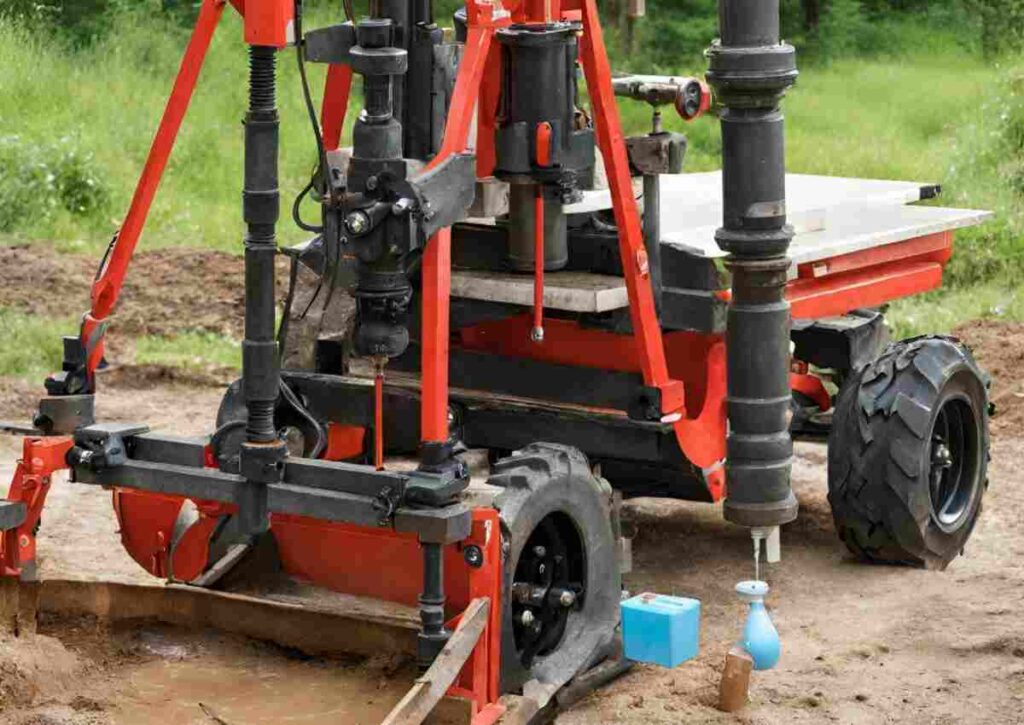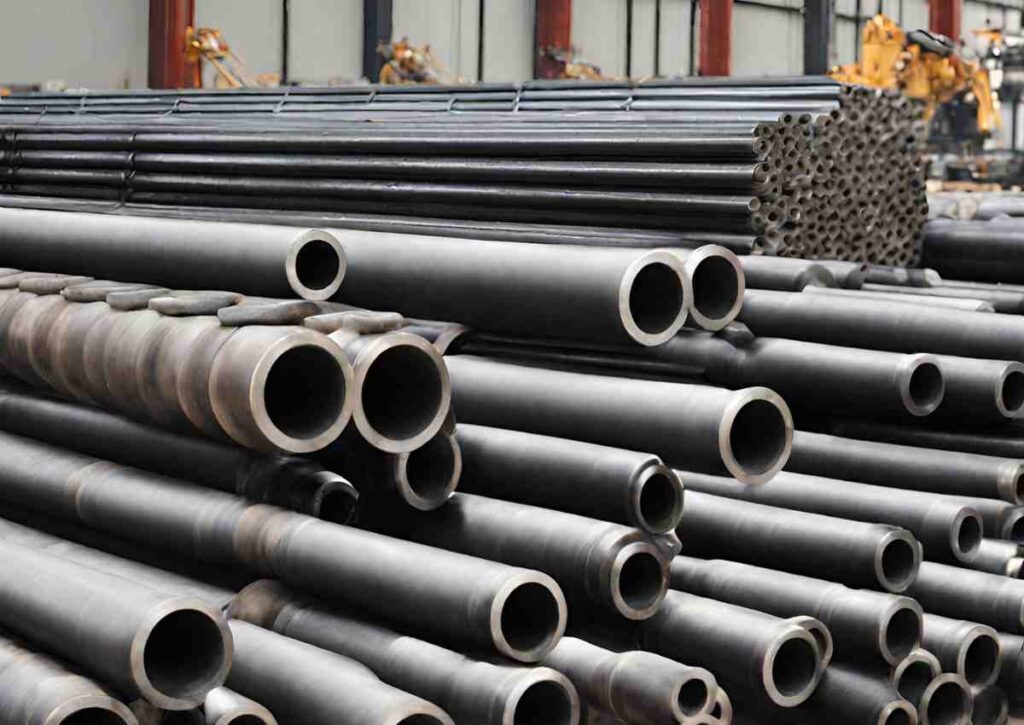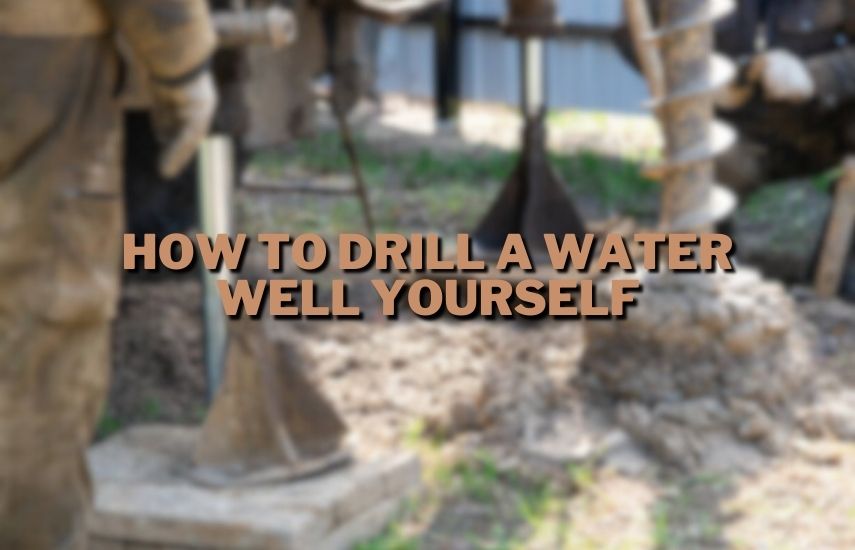Are you sick of paying a lot of money for water well drilling? Or you’re in the middle of nowhere and can’t access water sources.
To drill a water well yourself, you need to learn about the rules, get the necessary permits and tools, be careful when drilling, and ensure the casing is correct to keep water from getting contaminated.
For a do-it-yourself well, it needs to be maintained regularly and with professional help.
This blog talks about how to drill a water well yourself, the different types of tools you’ll need, the pros and cons, and the safety precautions you should take.
It focuses on how cost-effective it is to do it yourself, how to make it your own, and how to stay safe.
How To Drill A Water Well Yourself
First things first: find out the rules in your area, get any permits, and get the tools you’ll need, like a drilling rig, casing pipe, and well screen.
Choose a good spot, drill carefully, and then put the case in place to keep it clean.
If you want to do your well drilling successfully, keep up with upkeep and get help from a professional.
That’s why more people are using do-it-yourself water well-digging tools.
This blog post will talk about different drilling tools and give you tips on how to drill a well that will provide you with clean water all the time, right in your backyard.
Also Read: How To Drill A Pilot Hole Like A Pro
Types Of DIY Water Well Drilling Equipment

In rural places, water wells are essential for getting water. It can be expensive to dig a well, but you can do it yourself if you have the right tools and know-how.
There are different kinds of do-it-yourself water well drilling tools to fit different needs and budgets.
1. Hand Augers
Hand Auger are cheap tools for digging small wells because they are simple and can be used by hand.
The blade is spiral-shaped, and the stick is long and hollow. They work best in soft, sandy soil up to 25 feet deep. But they can’t be used on rough, rocky ground or deep wells.
2. Equipment Driven Into Wells
Driven well tools use a long, thin pipe to pound the well into the ground with a heavyweight.
It’s easy for one person to use and works great in soft dirt up to 50 feet deep. However, it could be better for drilling deep into rocks or hard ground.
3. Rotary Drilling Rigs
Diesel engines power rigid drilling rigs mounted on trucks or trailers. They are strong and can be used for deep, large-diameter wells.
They can drill wells up to 300 feet deep in hard, rocky ground. However, they are pricey and require expert operation to be secure.
4. Hydraulic Drilling Machines
It takes a hydraulic motor to run a hydraulic drilling machine, another type of do-it-yourself water well drilling equipment.
They can go up to 100 feet deep into stiff, rocky ground. They cost more than hand augers or driven well tools but are easier to use than rotary drilling rigs.
What tools you need depends on the depth of your well, your soil type, and your budget.
Hand drills and driven well gear are easy to use and cheap, but they can only drill so deep.
On the other hand, rotary drilling tools and hydraulic machines can drill deeper wells but need more skill.
Advantages And Disadvantages Of DIY Water Well Drilling
Advantages:
- Cost Savings: DIY drilling offers significant cost savings compared to hiring professional services.
- Customization and Control: You have complete control over the well’s location, depth, and pump type, allowing for personalized choices.
- Skill Development: Drilling your well provides an opportunity to learn about geology, water tables, and drilling techniques, fostering new skills.
- Pride and Accomplishment: The sense of pride and accomplishment post-project is unparalleled, adding a rewarding aspect to the endeavor.
Disadvantages:
- Time-Consuming Process: DIY drilling can be time-consuming, ranging from days to weeks, depending on equipment and well depth.
- Equipment Costs: While cost-effective overall, associated equipment costs still require thorough research and price comparison.
Essential Components Of DIY Water Well Drilling Equipment

Water, a precious resource, is essential for survival. Drilling a well offers a reliable water source, but the process demands specific equipment. Here are critical components of DIY water well drilling equipment:
1. Drill Bits
These cutting tools create the borehole during drilling. Tri-cone, PDC, and diamond bits cater to different soil and rock types.
2. Drill Pipes
Long tubes that connect the drill bit to the surface. These tubes are usually steel and come in different lengths and diameters.
3. Mud Pumps
Circulating drilling mud through pipes, mud pumps cool and lubricate the drill bit while removing much sand.
4. Swivels
Connectors link mud pumps and drill pipes, allowing pipes to rotate while pumps remain stationary.
5. Casing And Screens
They are used to line the well hole and keep the wall from falling. A casing, usually made of steel, is put in place during digging.
Screens made of PVC or stainless steel remove debris and sand from the well water. Choose equipment aligning with your needs, soil type, and budget.
Things To Consider Before DIY Drilling Water Well
Considering a DIY water well on your property? Choosing the right equipment is most important for success.
1. Assess Your Needs
Find out how deep the well is and how much water it needs before you buy any tools.
A deep well drilling rig might be needed for home use, but for irrigation, a short well drilling rig might be enough.
2. Consider Soil Type And Depth
Different soils require specific equipment. Hard rock needs a robust drilling rig, while soft soil may work with a lightweight rig. Depth matters; deeper wells require more power.
3. Budget And Affordability
Set a budget, but don’t compromise quality for cost. High-quality equipment is crucial for a successful well. Research and compare prices before deciding.
4. Ease Of Use And Maintenance
Choose gear that fits your level of skill. Beginners should start with rigs that are simple and easy to use. For long-term use, also choose equipment that is easy to fix and keep up.
Safety Precautions For DIY Water Well Drilling

1. Proper Training And Equipment Handling
Before starting a DIY drilling project, gain proper training in handling equipment. Consider taking a water well drilling course or consulting a professional for guidance.
2. Utilizing Safety Gear
Equip yourself with safety gear, including protective clothing, goggles, and gloves. Safety gear reduces the risk of injuries during the drilling process.
3. Regular Equipment Maintenance
Maintain and check your drilling tools regularly to make sure they work safely. Fix any problems immediately to prevent accidents and breaks during drilling.
Conclusion
You can make your own tools for digging water wells, but you need to know what you’re doing and have the right ones.
You need to do a lot of research to find the right tools, such as a drilling rig, mud pump, drill bits, and more.
Do-it-yourself digging is a cheap and safe way to get water if you do it right.
A good and cheap way to make sure you have clean water on your land is to drill a water well yourself.
Still, it’s important to carefully think about whether or not this do-it-yourself job is possible and to know what tools you’ll need and how to stay safe.
FAQs
Can the tools you use to drill a water well at home also be used to drill a borehole?
Yes, the tools you use to drill a water well yourself can also be used to drill a shaft. What drill bits and tools to use depends on the type of rock and dirt.
Finding and researching the right tools is significant for a job to go well.
What equipment is used for borehole drilling?
A drilling rig, drill bit, drilling pipes, casing pipes, grouting tools, and a water pump are usually used for borehole drilling.
Drilling rigs can be placed on a truck a trailer, or be moved around. Drill bits are capable of breaking through rock and dirt. Drilling pipes connect the drill bit to the rig.
Casing pipes line the borehole, and grouting equipment keeps the hole clean. A water pump is responsible for bringing the water in the well to the surface.
How much does it cost to drill a water well with DIY equipment?
You can save money by digging your water well instead of hiring a professional, but costs are still involved.
Prices depend on the spot, the depth, and the tools used. The drilling part should cost around $200 on average, but doing a lot of study first is essential.
Can I drill my water well without a professional license?
Rules for drilling range from place to place. Drilling without a permit might be against the law in some areas.
Check the rules in your area and, if necessary, hire a licensed professional to help you with some parts of the drilling process.
Also Read
MrBeast Drill 100 Wells Around Africa









